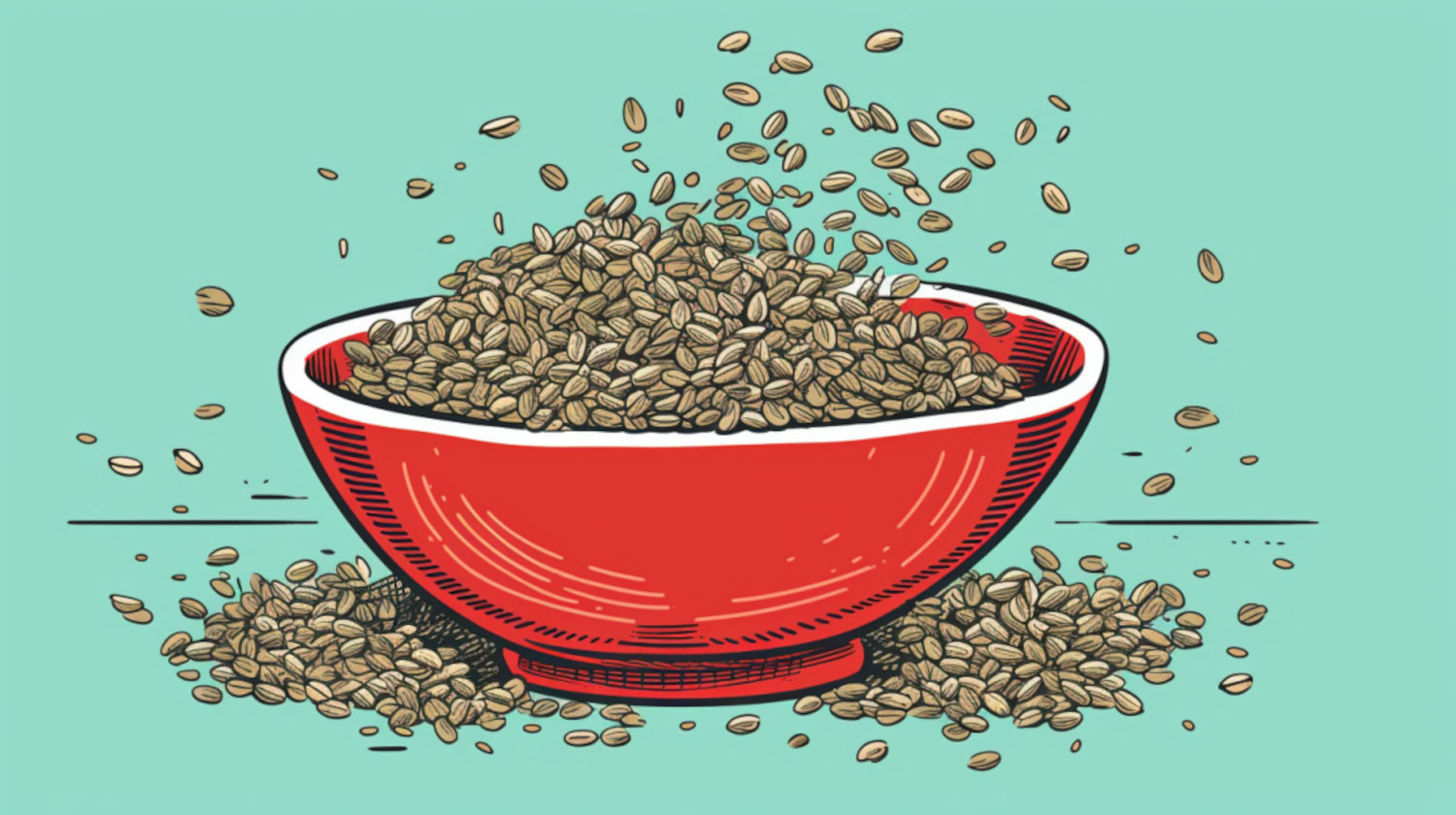In This Article
- What are Mints Strains?
- What are the Reported Effects of Mints Strains?
- What Conditions Do Mints Strains Help With?
- Anxiety
- Sleep
- Pain Management
- Appetite
- Migraines
- Main Terpenes in Mints Strains
- Myrcene
- Limonene
- Caryophyllene
- Terpinolene
- Linalool
- The Top 5 Mints Strains
- Kush Mints
- Triangle Mints #23 (aka Wedding Cake)
- Thin Mints
- Mint Chocolate Chip
- Gelato Mints
- References
Cannabis strains are classified into various categories based on their genetics. These categorizations help consumers quickly identify strains based on their unique but often shared characteristics. Of the many categories of cannabis plants, mint strains stand out as one of the exceptional groups.
What are Mints Strains?
Mint(z) strains are a classification of cannabis cultivars known for their aroma and flavor, which live up to their name. These terpene-rich strains offer a varying degree of mint in each strain and are often easily identified with a quick sniff or inhale.
The Mintz strain lineage began with the crossing of Girl Scout Cookies (GSC) with Blue Power, which created SinMint Cookies. From there, the Mints family grew, SinMint Cookies was crossed with Animal Cookies to make Animal Mints, and Animal Mints was crossed with Bubba Kush to create Kush Mints, and so on. In the years since, mints have taken off, creating a lush ancestry of strains. Many feature heavy hints of mint, while others showcase the ability to elevate a strain with more subtle minty hints.
Mintz cultivars stand out for not leaning too heavily one way or another for most customers. With an average reported THC level in most flower the mid-to high-20s, mints strains typically pack a punch that compliments its pleasurable flavor and aroma.
What are the Reported Effects of Mints Strains?

Mintz flowers are known for their minty flavors and aromas. However, their effects are equally, if not more so, noticeable to an array of recreational and medical cannabis consumers.
Some of mintz strains' most commonly reported beneficial effects include:
- Increased relaxation
- Uplifted moods
- Appetite increase
- Feelings of sleepiness
Unfortunately, not all experiences are positive, with some consumers reporting less-than-desirable side effects, including:
- Dizziness
- Dry eyes
- Dry mouth
- Anxiety
- Paranoia
The various effects in mints strains are common across cannabis.1 Each consumer will respond differently to a cannabis strain and its unique compound profile. While mints are often associated with sedative effects, usually driven by the terpene myrcene, some consumers will not feel a decrease in energy or similar effects like a loss of alertness.
By understanding a strain's terpene profile more deeply, consumers can better gauge what potential effects they may experience.
What Conditions Do Mints Strains Help With?
Mintz strains are frequently regarded by patients for producing a range of beneficial effects. Through its variety of results, medical patients report possible relief from symptoms such as
Anxiety
Reports suggest that low doses of THC could help alleviate anxiety through its beneficial interaction with the brain's CB1 receptors. However, higher doses of THC have been linked to increased anxiety.2
Sleep
Select studies have found that low doses of THC can shorten the time it takes to fall asleep while also increasing deep sleep. Higher doses have been linked to disrupted sleep patterns.3
Pain Management
THC and CBD have been linked to delivering relief for some severe pain symptoms when used together.4
Appetite
THC has been linked to enhancing levels of the hormone ghrelin, which may prove beneficial in conditions where patients experience decreased or suppressed hunger.5
Migraines
Certain cannabis strains rich in terpenes like β-caryophyllene and β-myrcene have been considered beneficial for migraine and headache relief, both serving as examples of potential analgesic and anti-inflammatory relievers.6
Despite the beneficial effects of THC, consumers need to monitor their dosage for the best possible outcomes. With such uncertainty around dosage, consumers are recommended to start at a low THC level, between 2.5 mg and 5 mg, and gradually increase the dosage over time, spanning several hours or several days of gradually increasing the dose.
Keep in mind that the plant's entire profile plays a role in its effects. Certain cannabinoids and terpenes have been linked to various results, showcasing how the plant's multiple compounds produce various outcomes.
Main Terpenes in Mints Strains

Terpenes play an essential role in plant life. In cannabis, these compounds shape each strain's flavor, aroma, and effects.
Mintz strains cover a wide array of options, each with a unique plant profile. However, a few terpenes are commonly found, helping link this plethora of minty options.
Prominently found terpenes in Mints include:
Myrcene
A terpene often linked for its earthy aromas, myrcene is also regarded for producing relaxing effects that may benefit individuals with anxiety and insomnia.7
Limonene
Offering up sharp citrus notes, limonene is also associated with stress relief and mood enhancement, which could aid those suffering from depression symptoms.8,9
Caryophyllene
With a spicy, peppery aroma, caryophyllene is also linked to relieving physical pain relief, such as anti-inflammation properties, and potential depression relief.10
Terpinolene
Terpinolene offers a pine-herbal aroma, which may be linked to relaxing, sedative effects, as well as potential pain relief.11,12
Linalool
Linalool features a floral meets lavender aroma profile helps produce relaxation effects that may help those suffering from mental pains, such as anxiety and depression, physical pain, and appetite loss/suppression.13,14,15,16
The Top 5 Mints Strains
A multitude of mints strains await consumers, from prominently minty strains to those more subtly scented.
If you're beginning your exploration of mints strains, consider some of the following favorites as a jumping-off point:
Kush Mints
The result of crossing Bubba Kush and Animal Mints, Kust Mintz is regarded for its balanced, relaxing effects, backed by mint and earthy flavors of aromas.
Triangle Mints #23 (aka Wedding Cake)
A highly beloved strain in today's consumer circles, this strain is the result of crossing Triangle Kush and Animal Mints. It delivers potent effects along with mint, sweet vanilla, and earthy undertones.
Thin Mints
A GSC phenotype, this sweet, minty strain is regarded for its ability to often relax consumers while uplifting their spirits.
Mint Chocolate Chip
A crossbreed of SinMint Cookies and Green Ribbon BX, this strain lives up to its name, flavor, and aroma, often delivering calming, uplifting effects.
Gelato Mints
This Gelato and Animal Mints cross is known for producing rich, sweet, minty flavors accompanied by a euphoric high.
References
- Lewis MA, Russo EB, Smith KM. Pharmacological Foundations of Cannabis Chemovars. Planta Medica. 2017;84(04):225-233. doi:10.1055/s-0043-122240 ↩︎
- Sharpe L, Sinclair J, Kramer A, de Manincor M, Sarris J. Cannabis, a cause for anxiety? A critical appraisal of the anxiogenic and anxiolytic properties. J Transl Med. 2020;18(1):374. Published 2020 Oct 2. doi:10.1186/s12967-020-02518-2 ↩︎
- Edwards D, Filbey FM. Are Sweet Dreams Made of These? Understanding the Relationship Between Sleep and Cannabis Use. Cannabis Cannabinoid Res. 2021;6(6):462-473. doi:10.1089/can.2020.0174 ↩︎
- MacCallum CA, Eadie L, Barr AM, Boivin M, Lu S. Practical Strategies Using Medical Cannabis to Reduce Harms Associated With Long Term Opioid Use in Chronic Pain. Frontiers in Pharmacology. 2021;12. doi:https://doi.org/10.3389/fphar.2021.633168 ↩︎
- Farokhnia M, McDiarmid GR, Newmeyer MN, et al. Effects of oral, smoked, and vaporized cannabis on endocrine pathways related to appetite and metabolism: a randomized, double-blind, placebo-controlled, human laboratory study. Translational Psychiatry. 2020;10(1). doi:https://doi.org/10.1038/s41398-020-0756-3 ↩︎
- Baron EP. Medicinal Properties of Cannabinoids, Terpenes, and Flavonoids in Cannabis, and Benefits in Migraine, Headache, and Pain: An Update on Current Evidence and Cannabis Science. Headache: The Journal of Head and Face Pain. 2018;58(7):1139-1186. doi:https://doi.org/10.1111/head.13345 ↩︎
- Surendran S, Qassadi F, Surendran G, Lilley D, Heinrich M. Myrcene—What Are the Potential Health Benefits of This Flavouring and Aroma Agent? Frontiers in Nutrition. 2021;8. Accessed May 21, 2024. ↩︎
- Sommano SR, Chittasupho C, Ruksiriwanich W, Jantrawut P. The Cannabis Terpenes. Molecules. 2020;25(24):5792. Published 2020 Dec 8. doi:10.3390/molecules25245792 ↩︎
- Eddin LB, Jha NK, Meeran MFN, Kesari KK, Beiram R, Ojha S. Neuroprotective Potential of Limonene and Limonene Containing Natural Products. Molecules. 2021; 26(15):4535. https://doi.org/10.3390/molecules26154535 ↩︎
- Francomano F, Caruso A, Barbarossa A, Fazio A, La Torre C, Ceramella J, Mallamaci R, Saturnino C, Iacopetta D, Sinicropi MS. β-Caryophyllene: A Sesquiterpene with Countless Biological Properties. Applied Sciences. 2019; 9(24):5420. https://doi.org/10.3390/app9245420 ↩︎
- Ito, K., Ito, M. The sedative effect of inhaled terpinolene in mice and its structure–activity relationships. J Nat Med 67, 833–837 (2013). https://doi.org/10.1007/s11418-012-0732-1 ↩︎
- Johnson AL, Verbitsky R, Hudson J, Dean R, Hamilton TJ. Cannabinoid type-2 receptors modulate terpene induced anxiety-reduction in zebrafish. Biomedicine & Pharmacotherapy. 2023;168:115760. doi:https://doi.org/10.1016/j.biopha.2023.115760 ↩︎
- Weston-Green K, Clunas H, Jimenez Naranjo C. A Review of the Potential Use of Pinene and Linalool as Terpene-Based Medicines for Brain Health: Discovering Novel Therapeutics in the Flavours and Fragrances of Cannabis. Frontiers in Psychiatry. 2021;12. ↩︎
- Cui J, Li M, Wei Y, et al. Inhalation Aromatherapy via Brain-Targeted Nasal Delivery: Natural Volatiles or Essential Oils on Mood Disorders. Frontiers in Pharmacology. 2022;13. ↩︎
- Nguyen NPK, Tran KN, Nguyen LTH, Shin HM, Yang IJ. Effects of Essential Oils and Fragrant Compounds on Appetite: A Systematic Review. Int J Mol Sci. 2023;24(9):7962. Published 2023 Apr 27. doi:10.3390/ijms24097962 ↩︎
- Liktor-Busa E, Keresztes A, LaVigne J, Streicher JM, Largent-Milnes TM. Analgesic Potential of Terpenes Derived from Cannabis sativa. Pharmacological Reviews. 2021;73(4):98-126. doi:https://doi.org/10.1124/pharmrev.120.000046 ↩︎
The information in this article and any included images or charts are for educational purposes only. This information is neither a substitute for, nor does it replace, professional legal advice or medical advice, diagnosis, or treatment. If you have any concerns or questions about laws, regulations, or your health, you should always consult with an attorney, physician or other licensed professional.




